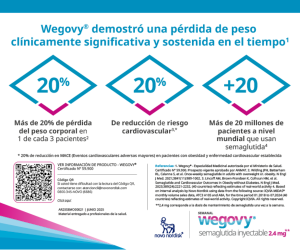P34 Description of a murine model of devolopment and reversal of diet-induced metabolic syndrome
DOI:
https://doi.org/10.47196/diab.v54i3Sup.444Keywords:
metabolic syndrome, dietAbstract
Introduction: Type 2 diabetes (DT2) is a disease with high prevalence worldwide and is constantly increasing. According to data from the latest National Survey of Risk Factors, in Argentina its prevalence is 12.7%. Several human studies determined that progression to DT2 can be prevented up to 58% by adopting healthy lifestyles in a cost-effective way. This disease is preceded by a state of pre-diabetes where the main signs are already present in smaller magnitude. Therefore, it is reasonable to think that the most effective way to improve the current situation is to delay the passage from pre-diabetes to TD2, addressing treatment in its early stages. To facilitate these studies, experimental models are usually used to simulate this state by the administration of unbalanced diets to normal rats.
Objectives: To evaluate the possible reversion of the pre-diabetic state induced by the intake of a high-fructose diet in rats through the replacement by a balanced diet.
Materials and methods: Adult male Sprague Dawley rats (60 days) were used as an experimental model and 4 treatment groups were established: standard commercial diet and tap water sacrificed at 21 days (C-21) and 42 days (C-42); the same commercial diet with the addition of 10% fructose in drinking water sacrificed at 21 days (F-21) and fed for another 21 days with standard commercial diet and tap water (FC-42). Once the experiment was finished, weight increases, total calories ingested and the percentage of liver weight in relation to the total weight of the animal (%liv) were calculated. After slaughter, blood glucose, triglyceridemia (TG) and the aspartate aminotransferase/alanine aminotransferase (AST/ALT) ratio in blood were determined. Insulin resistance was calculated using the index described by Unger et al (2014). In order to enrich the description of the pre-diabetic state (F-21), the hepatic values of triglycerides (livTG), total cholesterol and the gene expression of the lipogenic markers GPAT and FAS were determined. The statistical analysis of the data expressed as standard mean±error was carried out using ANOVA and multiple comparisons (Tukey, alpha=0.05).
Results: F-21 animals showed a significant increase in weight in comparison with C-21. However, the %liv as well as the caloric consumption (expressed per 100gr of rat/day) increased in F-21 and reverted in FC-42. Serum parameters described the expected metabolic state for F-21 and reversed their values by switching to a healthy diet (Table). The livers of F-21 rats showed increases in livTG and total cholesterol values and in the expression of lipogenic enzymes.
Conclusions: The data obtained allows the preliminary description of an effective model of pre-diabetes and reversion induced by a change to a healthy diet. The increase of hepatic lipogenesis (steatosis) would have a fundamental role in the development of metabolic alterations induced by the high-fructose diet and would explain the increase in the percentage of liver weight. It remains to be demonstrated that the reversion of this last parameter is due to a reversion of steatosis.
Downloads
Published
Issue
Section
License

This work is licensed under a Creative Commons Attribution-NonCommercial-NoDerivatives 4.0 International License.
Dirección Nacional de Derecho de Autor, Exp. N° 5.333.129. Instituto Nacional de la Propiedad Industrial, Marca «Revista de la Sociedad Argentina de Diabetes - Asociación Civil» N° de concesión 2.605.405 y N° de disposición 1.404/13.
La Revista de la SAD está licenciada bajo Licencia Creative Commons Atribución – No Comercial – Sin Obra Derivada 4.0 Internacional.
Por otra parte, la Revista SAD permite que los autores mantengan los derechos de autor sin restricciones.




























